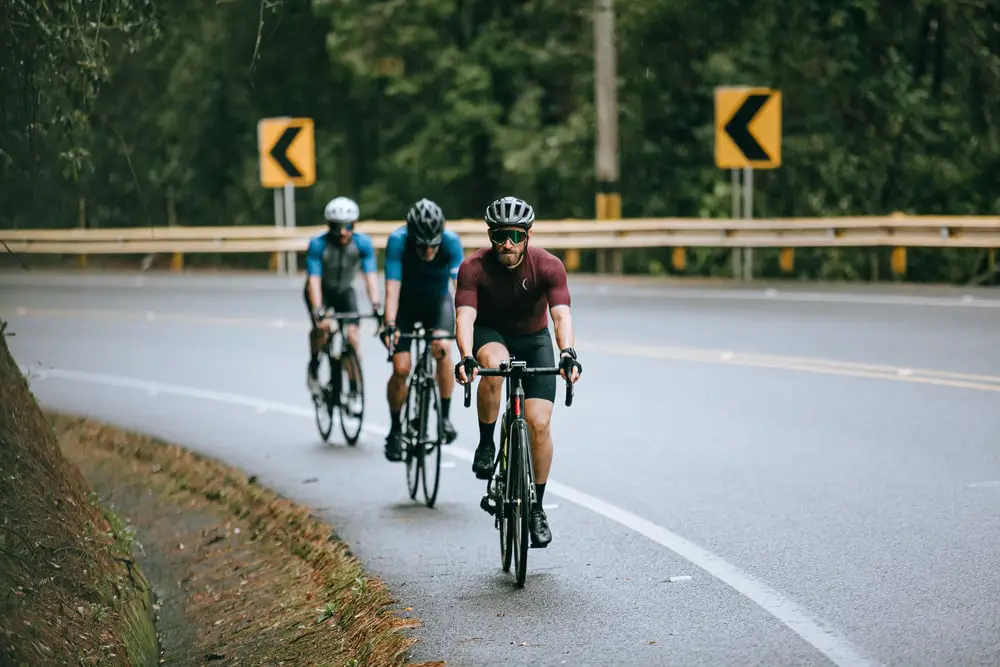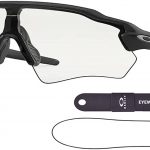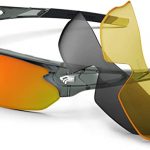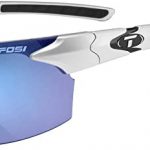When mountain biking, most riders wear helmets and gloves to protect their heads and hands if they crash. But what about protecting your eyes? Are cycling glasses really needed for mountain biking?
Protecting Your Eyes
Your eyes are very fragile. Small particles like dirt or tiny rocks could scratch your eyes while mountain biking. If a branch hits you, it could also damage your eyes. Wearing cycling glasses helps protect your eyes from things that could hit them on the trail.
Cycling glasses fit closer to your face than regular sunglasses. Most cycling glasses wrap around your face too, which blocks particles from getting in from the sides. The lenses are also impact-resistant, so they don’t shatter if you crash. This helps stop your eyes from getting hurt.
Your eyes have sensitive parts that are at risk when mountain biking. Your corneas are the clear outer layers on the fronts of your eyes. They can get scratched by even tiny pieces of grit and debris. Your irises control how much light enters your eyes and could tear if hit forcefully by a stick or rock. Your pupils open and close to adjust how you see. Branches could cut and infect them if they entered your eyes in a crash. The blood vessels and nerves in your eyes could also rupture from a bad injury, damaging your vision. So protecting all the fragile structures in your eyes is very important with cycling glasses when mountain biking.
If you got a bad eye injury while riding, you might need emergency surgery to save your vision. Doctors have to fully numb your eye for this, which can be very unpleasant. Later, your eyes may hurt for weeks as they heal. Vision damage from a scratched cornea or bleeding inside your eye could impact you for life. So preventing painful crashes into eyes-first is vital. Quality cycling glasses shield your eyes well to avoid agony and vision issues down the road.
Better Vision
Cycling glasses don’t just protect your eyes from injury. They also help you see better on the trail. The lenses block glare from the sun, which reduces eye strain. Glare can be distracting and make it harder to see obstacles or changes in terrain.
Some cycling glasses have specialized lenses. Photochromic lenses adjust how dark they are depending on the light. So they get darker when you ride into sunlight and clear up in shade. Other cycling glasses have different color tints like yellow or orange. These highlight contrasts and bring out details on the trail you might otherwise miss.
Preventing Eye Irritation
Riding a mountain bike means traveling at higher speeds than you would walking or hiking. Even on smooth straight sections, the wind hits your eyes directly. This can cause watery eyes or make your eyes feel dry and irritated over time.
Cycling glasses protect against wind irritation in a few ways. The wrap-around style blocks wind from the sides. Lenses also have vents to allow some airflow, which keeps wind from drying your eyes out. Using cycling glasses means arriving back from a ride with fresh, comfortable eyes.
When Are Cycling Glasses Needed?
You might wonder if you actually need cycling glasses for the mountain biking you do. Casual riding on smooth dirt paths may not require much eye protection. But as soon as you ride rougher terrain, cycling glasses become more important.
Jumping curbs, riding over roots or rocks, or bombing down steep hills all make crashes more likely. Debris kicked up by your tires could also fly into your eyes. The faster you ride, the greater the chances you take damage to your eyes.
So while cycling glasses are optional for mellow rides, they are highly recommended for true mountain biking. Their eye protection and enhanced vision outweigh any downsides. You only get one set of eyes, so it pays to guard them!
Drawbacks of Cycling Glasses
Cycling glasses do have some negatives compared to wearing regular sunglasses or no eye protection. One issue is they can steam up when you stop riding. The wrap-around style traps heat and moisture close to your eyes. Anti-fog lens coatings help, but aren’t perfect.
Another drawback is reduced airflow. Lenses have vents, but some riders feel cycling glasses are stuffier than bare eyes. That may take some adjustment if you’re used to riding without any eye protection. Carrying a lens cloth to wipe off sweat is handy too.
Finally, cycling glasses cost more than basic sunglasses. But many riders feel the benefits for their eyes and trail vision make the price worthwhile. Better protecting your eyes so you can keep riding safely has real value too.
Choosing the Best Cycling Glasses
If you decide cycling glasses are necessary gear for the mountain biking you do, look for certain features:
Impact-resistant polycarbonate or plastic lenses. These won’t shatter on impact.
Wrap-around coverage blocking your peripheral vision. This stops particles from the sides.
At least some ventilation on the lenses to reduce fogging.
Photochromic or color tint options based on light conditions you ride in.
A close, comfortable fit you find works for your face shape.
Taking the time to test different cycling glasses will help get the right protection for your eyes and riding needs. Don’t settle for less than full eye shielding from debris, insects, dust, and other hazards when mountain biking.
Conclusion
Your eyes face many threats when mountain biking like crashes, flying debris, sun glare, irritation, and eye strain. Protecting them with quality cycling glasses designed for rugged trails makes good sense.
While casual riding may not demand much shielding, once you take on roots, rocks, jumps and high speeds, cycling glasses become necessary. They protect fragile eyes from damage while enhancing trail vision too. So the next time you gear up to ride, add cycling glasses before you hit the trails. Your eyes will thank you!





